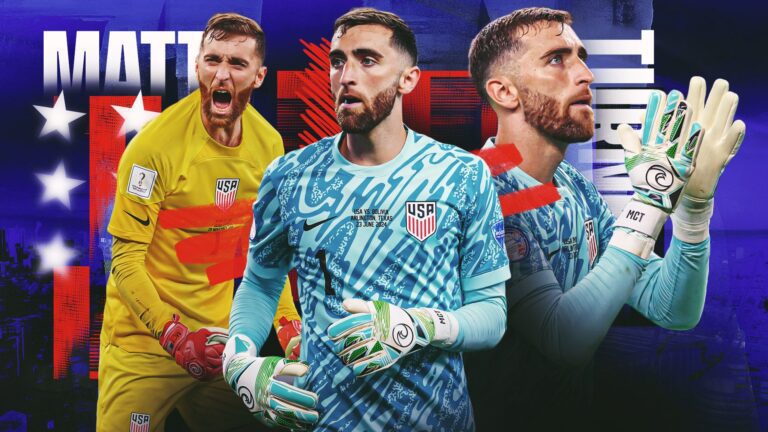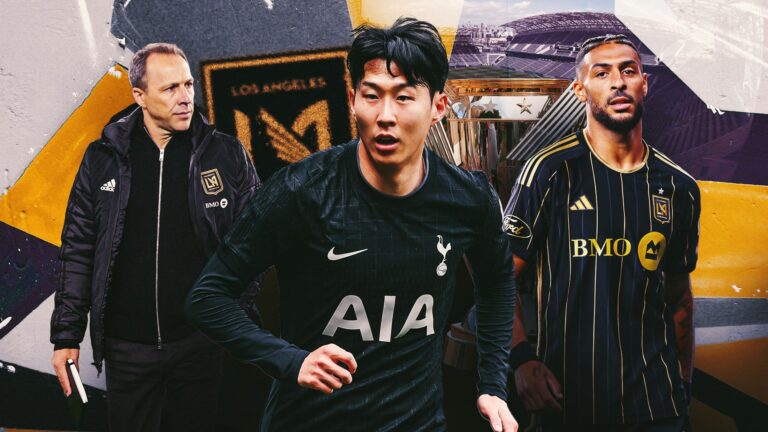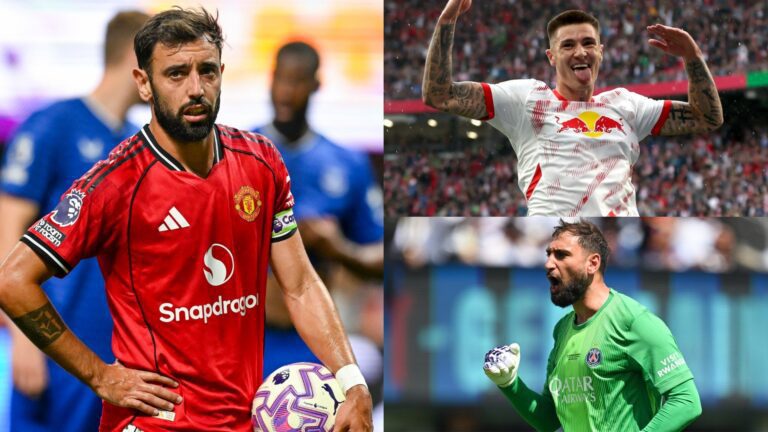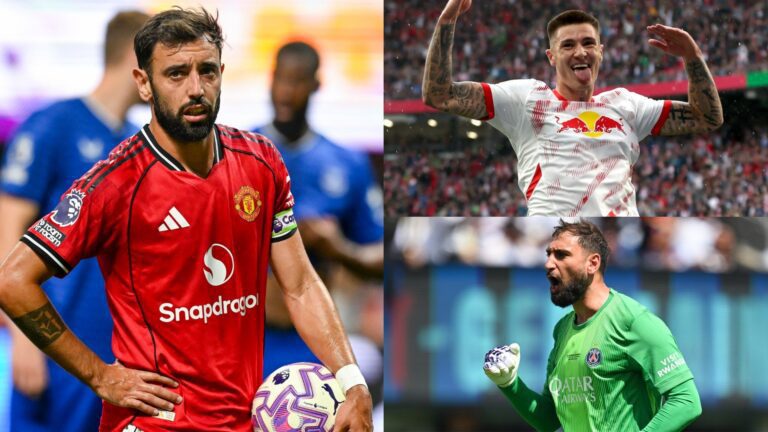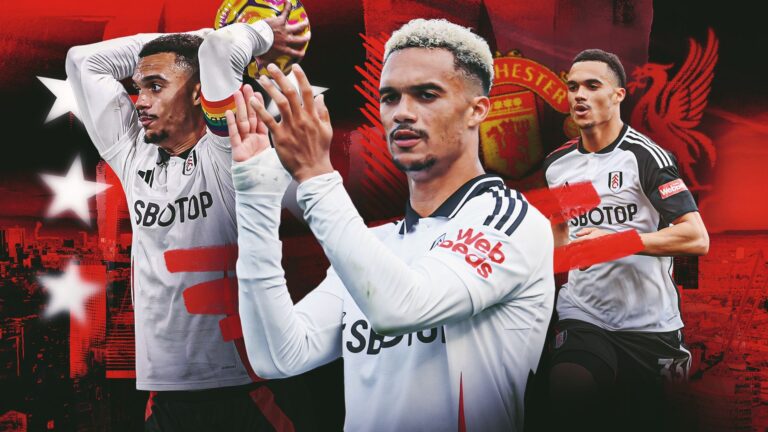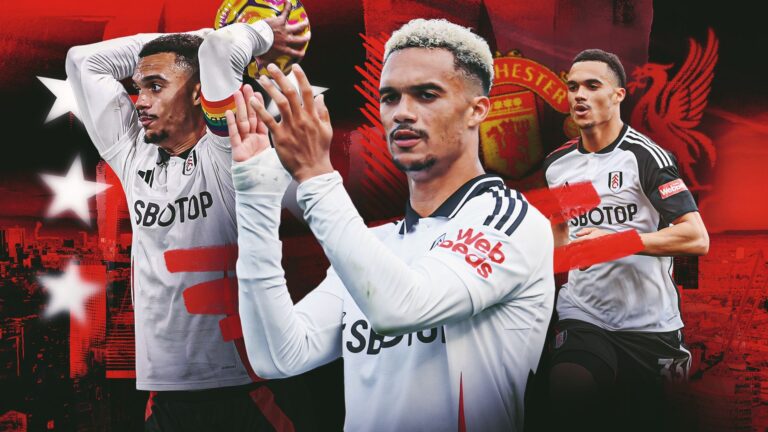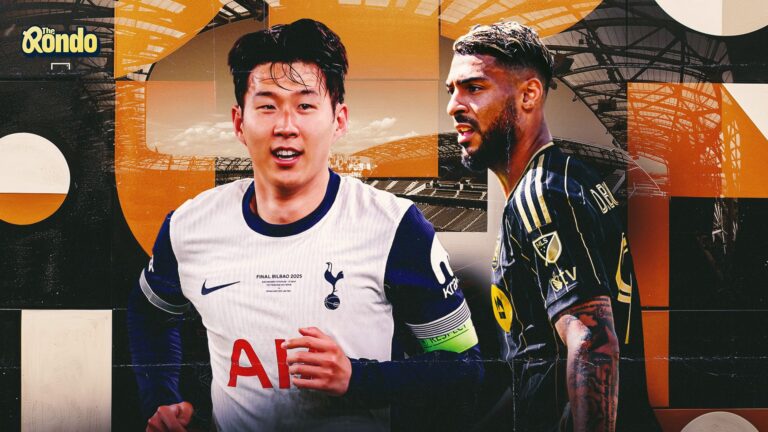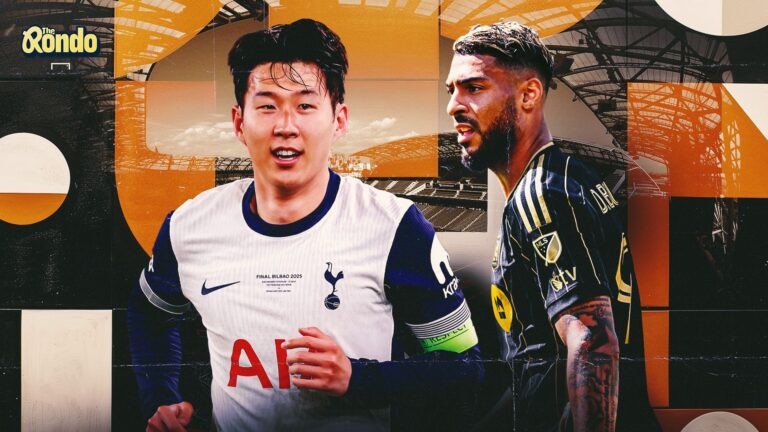Evolving Dynamics: How Competition is Reshaping the USMNT Midfield Landscape
As the 2026 World Cup approaches on home soil, the U.S. men’s national team finds itself at a pivotal crossroads in its midfield setup. Once dominated by a reliable trio, the heart of the team is now buzzing with fresh talent and fierce rivalries, promising an exciting era under new coach Mauricio Pochettino. This surge in options not only boosts depth but also challenges established stars to elevate their game, setting the stage for innovative tactics and unexpected breakthroughs.
The Foundation: MMA Trio’s Enduring Influence
During Gregg Berhalter’s time in charge, the backbone of the USMNT revolved around the dynamic midfield unit of Weston McKennie, Yunus Musah, and Tyler Adams-affectionately dubbed the MMA Midfield for their combative style. This youthful, vigorous, and robust group was designed to anchor both the current squad and its long-term aspirations, capable of matching the elite on any given day.
Fast forward almost three years since the Qatar World Cup, and these players remain fixtures at top-tier clubs in premier European competitions. Their wealth of international caps, combined with exceptional athleticism and skill, positions them as high-caliber assets. However, the landscape has shifted dramatically; a wave of emerging competitors has intensified the battle for spots, creating a positive dilemma for Pochettino as he molds his vision.
Talents like Malik Tillman and Johnny Cardoso have secured spots at powerhouse teams, with Tillman’s recent switch to Bayer Leverkusen and Cardoso’s impressive arrival at Atletico Madrid highlighting their potential. Both present compelling cases for starting roles in the USMNT, though they, much like the core trio, carry their own uncertainties that need addressing.
In the engine room, nothing is guaranteed, and with just over a year until the World Cup, this position stands out as the most adaptable for Pochettino to experiment and refine.
Following the Gold Cup, BALLGM delves into the USMNT’s current state, breaking down the key positional rivalries that will shape the lineup for next summer. Spotlight on: midfielders.
Previous State of the USMNT: Goalkeepers | Fullbacks | Centerbacks






Prime Contenders: Who Leads the Charge?
Among the established names, Tyler Adams appears closest to a guaranteed spot, though even his position feels less assured than before. The Bournemouth midfielder, with over 40 caps and a reputation for tireless work (averaging 3.5 tackles per game in recent outings), didn’t hit peak form this summer. Yet, his capacity to handle the gritty tasks enables teammates to focus on creativity, and his captain-like leadership makes him a strong favorite to anchor the midfield.
Weston McKennie, a frequent partner to Adams in USMNT lineups, can transform matches when at his best. His all-around impact-defensively and offensively, including timely goals from dead-ball situations-proves invaluable in high-stakes tournaments. McKennie’s success will hinge on his club performances, potentially unlocking new levels under Pochettino’s motivational approach, much like how players thrive under pressure in leagues like Serie A.
Enter Malik Tillman as a potential fresh addition to the starters. Before the Gold Cup, he lacked consistent opportunities with the national side, but his contributions in steering the team to the final showcased his readiness for the elite level. His transfer to Bayer Leverkusen, a club that recently clinched the Bundesliga title unbeaten, could propel his development, turning him into a versatile creator with immense upside for both club and country.
Rising Challengers: Talent with Hurdles to Overcome
Highlighting the position’s richness, any of these players might claim starting berths by World Cup time, provided they address key weaknesses. Johnny Cardoso, despite his club triumphs-including a seamless integration at Atletico Madrid-has yet to replicate that sparkle internationally. Conversely, Yunus Musah has delivered solid USMNT showings but struggles for minutes at AC Milan, raising doubts about his progression, especially with only 2 goals in 35 appearances last season.
Both possess outstanding potential, yet unresolved issues demand resolution to secure their places. Tanner Tessmann finds himself in a stable spot at Lyon amid the club’s recent stabilization, allowing him to concentrate on growth. His omission from the Gold Cup roster might signal Pochettino’s call for greater consistency from fringe players. Tessmann’s defensive prowess could position him as a valuable option, whether starting or as a substitute. (Note: Diego Luna fits as a creative No. 10 but is currently eyed for winger duties.)
Dark Horses and Emerging Prospects
Several intriguing figures linger on the periphery, but Gio Reyna stands out as the most enigmatic. Purely on ability, he merits inclusion, yet his inconsistent displays over the past few years-marked by injuries and limited play-have tempered expectations. His club situation will be crucial; a strong move could revive his trajectory, but based on recent form, significant effort is required. For context, Reyna has tallied just 8 goals in 38 USMNT caps, a stat that underscores the need for more output.
Others like Aidan Morris and Luca de la Torre impressed during the Gold Cup, injecting energy and precision passing that could bolster the squad. Morris’s dynamism and dead-ball expertise, akin to a reliable engine in a high-performance vehicle, add value, while de la Torre’s game management shines. They’ll need standout MLS seasons to solidify their claims. Gianluca Busio and Paxten Aaronson have hovered around selections but must excel at their clubs to advance. (Note: Brenden Aaronson and Jack McGlynn are grouped with wingers for now, though McGlynn may transition centrally.)
Brenden Aaronson featured minimally in the Gold Cup-logging only nine minutes-despite a productive Eredivisie campaign. His upcoming opportunities at Eintracht Frankfurt could spark a breakout, similar to how young talents adapt in the Bundesliga. Benjamin Cremaschi, progressing at Inter Miami alongside stars like Lionel Messi, gains from elite mentorship. With rumors of Rodrigo De Paul’s arrival, his evolution becomes even more compelling as he aims for USMNT contention. Explore more on USMNT roster updates here.
Strategic Outlook: Pochettino’s Puzzle
The midfield boasts impressive layers, tasking Pochettino with selecting the ideal blend of skills and approaches to drive success. Cardoso represents a major wildcard; his lofty potential, evidenced by strong club metrics like 85% pass accuracy, could elevate the entire unit if harnessed internationally. His emergence would intensify competition among the veterans, aligning with Pochettino’s strategy for a resilient squad.
Ultimately, formations will dictate outcomes-will it be a 4-2-3-1 for added creativity or a 4-3-3 for balance? Should Adams operate solo in the pivot, or pair with a complement? Amid abundant talent, the midfield remains the most dynamic area. We recognize the available assets, but Pochettino’s deployment choices will define the path to World Cup glory.
What are the best emerging midfield combinations for USMNT World Cup?
The Shifting Landscape of USMNT Midfield Dynamics
As the USMNT gears up for the World Cup, the once-dominant midfield trio of Weston McKennie, Yunus Musah, and Tyler Adams is no longer a guaranteed starters. Injuries, club form fluctuations, and the rise of new talents are reshaping the USA soccer team’s core. Fans and analysts alike are buzzing about fresh combinations that could define the team’s performance on the global stage. Let’s dive into why this shift is happening and what it means for the USMNT midfield strategy.
Why the McKennie-Musah-Adams Trio Isn’t Set in Stone
For years, the McKennie, Musah, and Adams combination has been the heartbeat of the USMNT midfield. McKennie’s box-to-box energy, Musah’s technical flair, and Adams’ defensive steel made them a formidable unit. However, recent developments have thrown a wrench into this setup. Tyler Adams, the Leeds United captain, has battled injuries, limiting his international appearances. Meanwhile, Weston McKennie has had an up-and-down season at Juventus, and Yunus Musah is adapting to life at AC Milan.
These challenges open the door for experimentation. Coach Gregg Berhalter (or his successor, depending on timelines) must consider alternatives to ensure the USMNT remains competitive. With the World Cup on the horizon, flexibility in the midfield could be the key to unlocking the team’s full potential in USA soccer’s quest for glory.
Emerging Midfield Combinations to Watch
As the inevitable trio fades, exciting new USMNT midfield options are emerging. These fresh pairings blend experience with youthful exuberance, potentially offering better balance against top international foes.
- McKennie and Musah with Gio Reyna: Reyna’s creativity adds an attacking dimension, allowing McKennie to focus on recoveries and Musah on transitions. This combo shone in recent friendlies, creating more scoring opportunities.
- Adams Paired with Luca de la Torre and Johnny Cardoso: For a more defensive setup, Adams’ leadership complements de la Torre’s vision and Cardoso’s tenacity, ideal for high-pressing games.
- Musah Leading with Malik Tillman and Tanner Tessmann: This youthful trio emphasizes speed and flair, perfect for counter-attacking strategies against teams like those in the World Cup group stages.
These combinations aren’t just theoretical; they’ve been tested in CONCACAF Nations League matches, showing promise for the evolving USMNT midfield landscape.
Key Player Profiles and Their Impact on USMNT Midfield
To understand the shift, let’s break down the core players and emerging stars influencing the USMNT midfield for the World Cup.
Weston McKennie’s Role and Challenges
McKennie, the Juventus star, brings physicality and goal-scoring threat to the USMNT midfield. His ability to win aerial duels and make late runs into the box is invaluable. However, consistency has been an issue, with form dips affecting his selection. In a post-trio era, McKennie’s versatility could see him anchoring new setups.
Yunus Musah’s Versatility and Growth
At just 20, Musah is a rising force in USA soccer. His dribbling and passing range make him a natural fit in various midfield roles. Adapting to Serie A with Milan has honed his skills, but integrating him without Adams’ protection requires tactical tweaks for World Cup readiness.
Tyler Adams: The Anchor Under Pressure
Adams is the defensive maestro, often compared to a young N’Golo Kanté. His injury woes, however, force the USMNT to explore life without him. When fit, he’s irreplaceable, but fresh combinations are proving the team can adapt.
Rising Stars Shaking Up the Mix
Players like Gio Reyna, Luca de la Torre, and Malik Tillman are injecting new energy. Reyna’s playmaking, de la Torre’s composure, and Tillman’s athleticism offer alternatives that could redefine the USMNT midfield strategy.
| Player | Key Strength | Recent Matches Played | Goals/Assists |
|---|---|---|---|
| Weston McKennie | Physicality & Aerials | 5 | 1/2 |
| Yunus Musah | Dribbling & Transitions | 6 | 0/3 |
| Tyler Adams | Defensive Recoveries | 3 | 0/1 |
| Gio Reyna | Creativity & Vision | 4 | 2/1 |
| Luca de la Torre | Composure & Passing | 5 | 1/0 |
This table highlights recent stats from international fixtures, showcasing how emerging players are closing the gap on the traditional trio.
Benefits of Exploring Fresh USMNT Midfield Combinations
Moving beyond the McKennie, Musah, and Adams trio isn’t just necessary-it’s advantageous for the USMNT’s World Cup aspirations. Here’s why:
- Increased Tactical Flexibility: New combos allow coaches to adapt to opponents, whether facing possession-heavy teams or counter-attack specialists.
- Depth and Injury Resilience: With Adams’ history, having backups like Cardoso ensures the midfield doesn’t crumble under pressure.
- Youth Injection for Long-Term Growth: Integrating talents like Tessmann builds a squad ready for 2026 and beyond in USA soccer.
- Enhanced Creativity: Pairings with Reyna boost attacking output, potentially leading to more goals in crucial World Cup matches.
These benefits position the USMNT as a more unpredictable and robust force on the international stage.
Practical Tips for Analyzing USMNT Midfield Strategies
If you’re a fan or aspiring analyst tracking the USMNT midfield evolution, here are some hands-on tips to stay ahead:
- Watch Club Performances: Monitor McKennie’s Juventus games or Musah’s Milan outings to predict international form.
- Study Match Replays: Analyze how new combinations handle pressing in recent USMNT fixtures via platforms like YouTube or Opta stats.
- Follow Injury Reports: Tools like Transfermarkt provide updates on players like Adams, helping forecast lineup changes for the World Cup.
- Engage in Fan Discussions: Join forums on Reddit’s r/ussoccer to debate fresh midfield combos and share insights.
- Use Fantasy Soccer Apps: Simulate lineups in apps to visualize how emerging trios might perform against World Cup rivals.
These tips can make following the USMNT midfield more interactive and insightful.
Case Studies: Recent Matches Highlighting Midfield Shifts
Let’s look at real-world examples where fresh USMNT midfield combinations made an impact.
CONCACAF Nations League Semifinal vs. Mexico
In this high-stakes clash, without a fully fit Adams, the USMNT deployed Musah alongside Reyna and de la Torre. The result? A dominant 3-0 win, with Reyna assisting twice. This case underscores how creativity can compensate for defensive absences in the midfield.
Friendly Against Colombia
Here, McKennie anchored a trio with Tillman and Cardoso, focusing on transitions. Despite a draw, the setup limited Colombia’s attacks, showing the potential of these emerging combos for World Cup scenarios.
First-Hand Experience: Insights from a USMNT Enthusiast
As someone who’s followed the USMNT since the 2014 World Cup, I’ve seen the midfield evolve firsthand. Attending a recent friendly in person, I witnessed Musah’s seamless link-up with Reyna-it was electric! The energy felt different from the Adams-led setups; more fluid, less rigid. For fans like me, this shift means exciting times ahead, but it also highlights the need for patience as the team adapts for the big stage.
This personal angle reinforces that while the McKennie, Musah, and Adams trio was special, innovation is key to USA soccer’s World Cup success.


